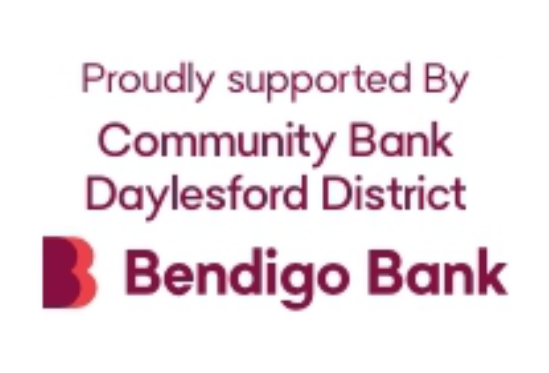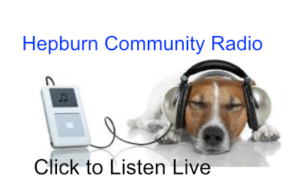Elections for Hepburn Shire Council will change dramatically this year.
Following a recommendation from the Victorian Electoral Commission about the electoral structure for the Shire, the Minister has agreed that Hepburn Shire will adopt an un-subdivided structure, represented by 7 councillors. This means is all voters in the Shire will vote for all councillors rather than voting for one or two councillors for a particular local ward.
The Wombat Post posed a number of questions to the VEC about how the election would work in an un-subdivided structure and their responses are included in the information below.
Here’s what the new structure means for voters and for candidates for Council.
Full Preferential ballot
Voting in local council elections is full preferential. For a ballot to be counted, the voter must number all boxes in order of their preference. In the last Hepburn Shire Council election, there were 19 candidates in total across the five former wards in the Shire. If a similar number of candidates nominate in the forthcoming election, all 19 candidates would have to be numbered in preferred order. This is unlike voting in a federal or state election for the upper house which, because of recent reforms, is partial preferential requiring a minimum number of candidates (often 7) to be numbered in preferential order and the remainder can be left blank.
There is no option to vote “above the line” as there is in upper house elections by numbering a single box which causes preferences to flow according to the preferred party preference allocations because party affiliations, if they exist, are not listed on the ballot paper in local government elections.
One weakness of this system is that the order of candidates listed on the ballot can have an influence on results. If a voter marks their top two or three preferences and then starts on the top left of the ballot and numbers all of the remaining boxes consecutively, candidates listed at the beginning of the ballot can have a significant advantage. This weakness is exaggerated in local council elections by the fact that candidates are not grouped according to political affiliations and the fact that the candidates will not be as well known as candidates in a federal or state election might be.
Counting votes
To be elected, candidates must receive a proportion of votes known as a “quota”. Any candidate who receives the quota is elected. Any votes they receive over the quota are then passed on to other candidates according to voters’ preferences. If no candidate achieves the quota, or if there are still vacancies after all the votes over the quota have been passed on, the candidate with the fewest votes is excluded. Their votes are passed on to other candidates according to voters’ preferences. The process is repeated until all vacancies are filled.
There are about 12,000 voters on the electoral roll for the Hepburn Shire Council election. If all eligible voters vote in the election, the quota for an individual to be elected will be about 1,700 votes. This will make it much more difficult for lesser known candidates from smaller townships to be elected.
Candidates
To be a candidate for a local council election, you must:
- be an Australian citizen
- be aged 18 years of age
- be enrolled on the voters’ roll for the council in which you wish to stand
- have completed the mandatory Local Government candidate training
- not be disqualified from being a councillor.
Candidates may lodge a 300 word statement and photo for inclusion in the ballot pack sent to voters. There is also a candidate questionnaire which candidates may complete, and the responses will be available online on the VEC website.
Candidates must nominate by a specified date and post a nomination fee of $250. The fee is refunded to candidates who are declared elected or who receive at least 4% of the total number of formal votes. For candidates in Hepburn Shire, this would require about 500 votes to receive a refund.
There is no public funding for candidates in local council elections. Candidates may receive donations or gifts towards their election campaign but these must be disclosed in a formal statement to the Shire CEO within 40 days after the election.
Candidates do not need to live in the Council area in order to stand for Council. Owner-ratepayers who live outside the Council area are eligible to nominate.
The VEC offers resources to support candidates in local government elections. Candidate handbooks available at https://www.vec.vic.gov.au/candidates-and-parties/becoming-a-local-council-candidate/local-council-candidate-resources
Political parties
Political parties and groups are not represented on ballot papers in local council elections. Candidates may include in their candidate statement a claim of endorsement or support from a political party, organisation or person, but they must provide written evidence of this endorsement when lodging their candidate statement.
This also means that candidates will not be grouped on the ballot according to any affiliations. The position of each candidate on the ballot paper is determined by a single computerised random draw for each council after nominations close. The order of candidates on the ballot can, as indicated above, have a substantial influence on the outcome.
Candidates will have the option of distributing How to Vote cards to voters to influence the flow of preferences. Preferences will not flow automatically as in “above the line” voting in Senate elections. Preferences will flow according to the order on each individual ballot.
Candidates with a well organised workforce, or with substantial financial resources, will be in a better position to distribute How to Vote cards more widely through advertising and at polling booths on election day. The will therefore be in a better position to influence the election of their fellow councillors.











